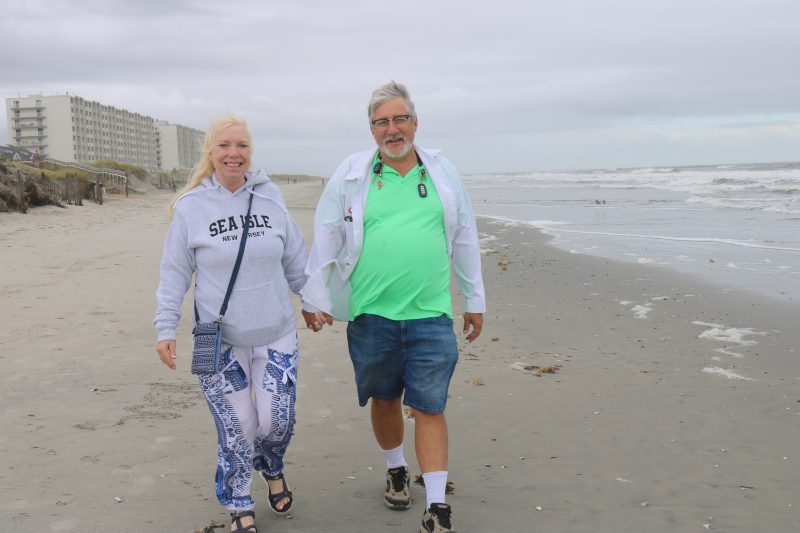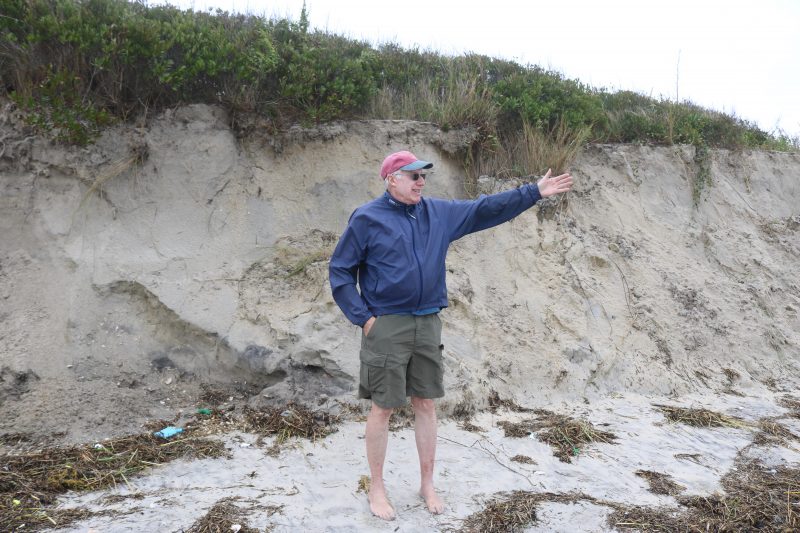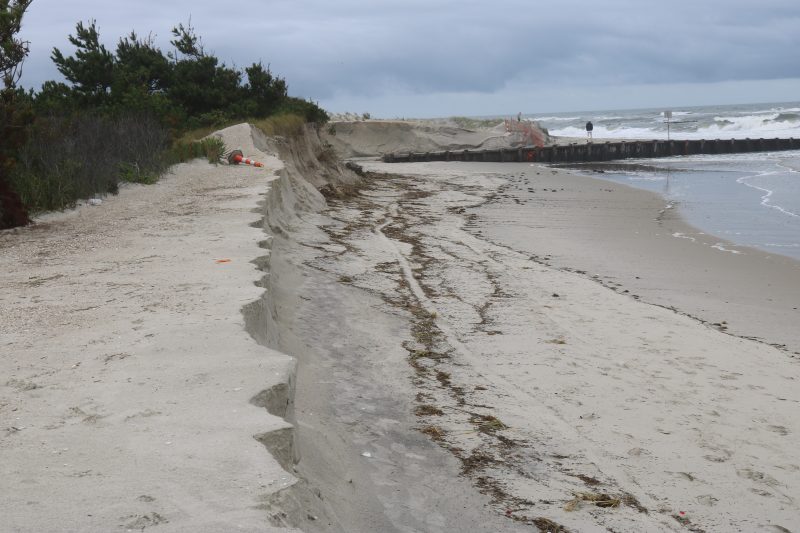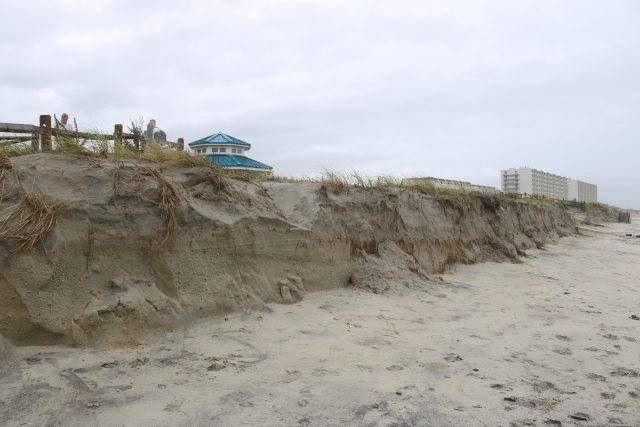By DONALD WITTKOWSKI
The weather forecast called for sunny skies at the Jersey Shore when Richard Zuchinski and his fiancee, Katie Scott, were planning their eight-hour drive from their home in Kent, Ohio, to Sea Isle City.
But by the time they arrived for their long weekend getaway at the shore, Tropical Storm Ophelia was lashing the coast on Saturday with fierce winds, flooding and drenching rain.
The storm also left another unfortunate calling card – serious erosion that stripped away the top layer of deep, powdery sand that gives the beaches their attractive appearance. Sections of Sea Isle’s protective dunes also suffered significant erosion.
“It was a big one,” Zuchinski said of the storm as he and Katie Scott walked hand-in-hand Sunday along the beach at John F. Kennedy Boulevard while surveying the erosion.

Zuchinski has been vacationing in Sea Isle for 35 years. He couldn’t recall seeing more serious beach erosion during all that time compared to Ophelia’s destructive aftermath.
“It looks like it kind of demolished the dunes,” he said. “Where did it all go?”
Paul and Leelani Voigtland, of Middletown, N.Y., were also planning to enjoy a long weekend at the shore when they got caught in the middle of the storm Saturday.
“We went to Avalon and were there for about a minute before we ran away,” Paul said with a laugh.
With the storm moving away from the shore Sunday, the Voigtlands were able to lounge on Sea Isle’s beaches with their children, Everly, 7, and Leopold, 4, during some more tranquil weather.

Still, the Voigtlands were shocked by the amount of beach erosion. Some of the dunes near JFK Boulevard and 40th Street had been sheared away by the raging ocean, leaving steep drop-offs down to the beach that towered above Everly and Leopold’s heads.
“There’s not much beach left, and the poor sand dunes appear to be washed away,” Paul said.
As a safety measure, the city blocked off some of the badly eroded beach pathways with yellow caution tape.
The Townsends Inlet section, in the southern tip of Sea Isle, was another part of the island that suffered beach erosion during Ophelia’s wrath.
Jere Seelaus, who lives in Ambler, Pa., and has a summer home in Sea Isle on 75th Street, said the erosion caused by Ophelia was more extensive than the typical storm damage that happens almost yearly in Townsends Inlet between 88th and 92nd streets.

Seelaus noted that Ophelia also badly eroded the dunes continuing about six blocks north of 88th Street.
“The erosion is farther north. It is all new erosion from the storm,” he said while walking on the beach.
He stopped to take a look at the dunes that had been sliced away at 88th and 89th streets. In their place were mini-cliffs close to 20 feet high, far taller than the 6-foot-3 Seelaus.
“It happens every year in the south end of Sea Isle,” Seelaus said of the erosion.
During the winter, Sea Isle hired a contractor to fortify the eroded dunes between 88th and 92nd streets through a process known as “sand harvesting.” Essentially, sand was scrapped from the water’s edge and pushed up against the dunes by earthmovers.
However, it appeared that Ophelia washed away a large portion of the beach and dunes that had been replenished by the sand harvesting.

Sand harvesting is a short-term way to restore the depleted dunes. Sea Isle is waiting for the U.S. Army Corps of Engineers to begin a full-scale beach replenishment project in the fall to restore a much-larger stretch of the eroded shoreline.
A contractor for the Army Corps will place 252,000 cubic yards of fresh sand in central Sea Isle from about 29th Street to 53rd Street. Another 388,000 cubic yards of new sands will restore the beach in the south end from about 73rd Street up to Townsends Inlet, Army Corps spokesman Steve Rochette said.
Bids have been opened for the beach replenishment project – which also includes Strathmere and the southern end of Ocean City – and are being evaluated by the Army Corps before a contract is awarded, Rochette said.








